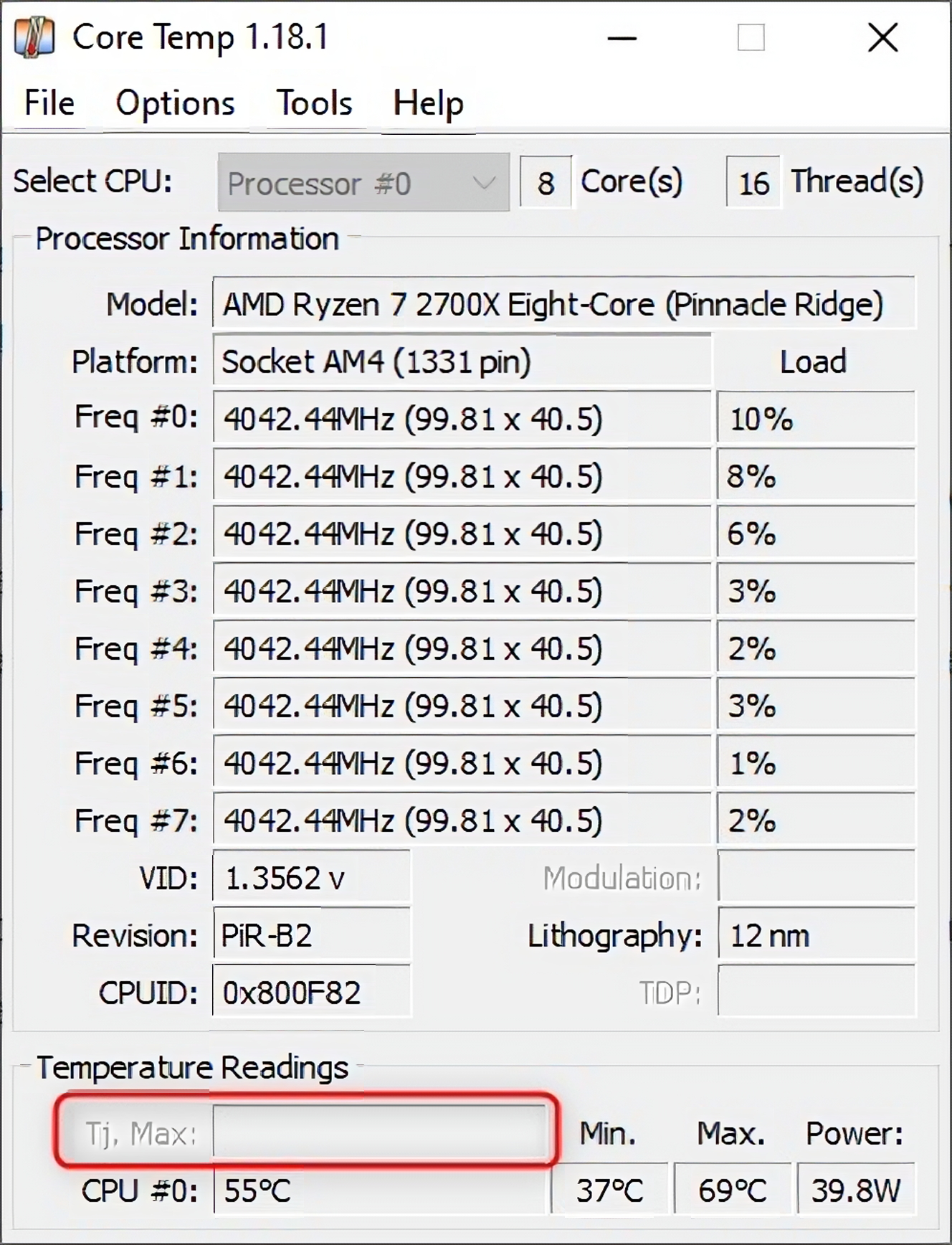Key Takeaways
- TJMax represents the maximum operating temperature a CPU can reach before initiating safety mechanisms to prevent overheating.
- CPU manufacturers provide TJMax values that they deem safe.
- You can find your CPU TJMax through Core Temp or by looking up your CPU model on the manufacturer’s website.
If you’ve monitored your CPU temperature or looked at its product page, you might have encountered the term “TJMax.” But what does this peculiar specification mean, and have you ever wondered what would happen if your CPU were to reach its TJMax?
What Does TJMax Mean?
TJMax (Thermal Junction Maximum) is a specification that represents the maximum temperature in a CPU or GPU before its transistors become unreliable. The “junction” is the location on the CPU die where the temperature is measured. It’s different from Tcase, which is the maximum temperature allowed on the Integrated Heat Spreader (IHS). TJMax is the maximum temperature a CPU will run at before it initiates its safety mechanisms to lower its clock speed and voltage to prevent overheating. If the CPU is still overheating even after slowing down, it’ll shut down to prevent permanent damage.
Manufacturers like Intel and AMD provide a TJMax value on their CPU spec sheets; AMD CPUs often have a TJMax of around 85–95°C, while Intel CPUs typically have a TJMax of 100–110°C, although the exact number varies between models and generations. Some motherboards let you change the CPU TJMax, usually under a “maximum operating temperature” or equivalent option, but the TJMax is typically set to the value specified by the CPU manufacturer.
Oddly enough, ASRock has reportedly set the default TJMax on some motherboards to 115°C, which is a bit too high and not at all necessary. If you want more performance, you shouldn’t adjust the TJMax; instead, buy a better aftermarket CPU cooler to allow the CPU to sustain higher boost clocks or manually overclock it.
Sustained high temperatures can shorten the CPU’s lifespan and cause permanent damage to and around the CPU. Therefore, even if your motherboard lets you change the maximum temperature, you shouldn’t exceed what Intel and AMD recommend on the specs sheet. You could instead use that option to lower the TJMax if you have concerns about overheating and the CPU’s lifespan. Still, you don’t really have to do that either, as the CPU manufacturer has already given you a tested and approved TJMax value you should stick to.
How to Check Your CPU TJMax
Assuming you don’t have a temperature monitoring tool installed already, it’s time to download and install one. Core Temp is a lightweight program that can read your CPU TJMax rating. Once you download and install Core Temp, you can see the TJMax value under “Tj. Max” on Intel CPUs. AMD CPUs don’t report the TJMax value, as you can see on my Ryzen 7 2700X.
The most reliable way to find the TJMax is to look up your CPU model on the manufacturer’s website and check the specifications. Both Intel and AMD specify the TJMax value for each CPU model. In case you don’t know the exact name of your CPU model, Core Temp conveniently displays it under “Model.”
There Isn’t a “Good” TJMax Value
You might be thinking that a higher TJMax value could mean that the CPU is better. However, it’s just a specification informing you what the manufacturer deems is the maximum safe operating temperature, not much else. You shouldn’t base your purchase decision on the TJMax value, and you probably shouldn’t base it only on the core count and clock speed, either. Instead, you start by looking at relevant CPU benchmarks and get one that fits your budget and meets your needs.
source
